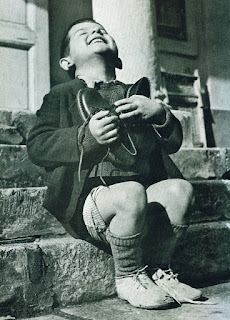October 26, 2018 (KyivPost) Ukraine’s Armed Forces need to
master the doctrine of mobile warfare and ditch outdated and ineffective
Soviet-era command structures to be able to withstand a full-scale attack by
Russia, retired British Army Colonel Glenn Grant said during a panel discussion
at the Lviv Security Forum on Oct. 26. According to the expert, the development
of Ukrainian army is hamstrung by Soviet thinking and combat doctrines dating
from the Cold War.
Retired
British Army Colonel Glenn Grant
“The Soviet army in its time was
preparing for another type of warfare,” Grant said.
“The Soviets expected armored
vehicles and troops to drive forward – and that basically the ones in
front would die. And because they were going to die, you didn’t actually need
very many people in the staff, you didn’t need much in terms of radios, you
just followed the lead until you found the enemy, and you attacked as hard as
possible, and lots of you died.”
Because Ukraine’s armed forces still
have a similar command structure to that, Ukrainian forces at the battalion
level do not have enough commanders to lead troops in combat in a proper way,
and this needs to change, Grant said.
Furthermore, at the battalion level
command is also over-centralized, and too much operative decision-making is
concentrated on a very few top-level commanders — another outdated Soviet-era
approach that does not match the realities of modern warfare.
“We have a joint headquarters for
the Donbas,” Grant said. “But we don’t currently have a joint headquarters for
Azov and the south coast, for Kyiv, or for coordinating battlefield reserves
should Russia attack seriously.”
“So who is going to command the
battle? At the moment it will be (Chief of General Staff) Viktor Muzhenko, on
his own in staff headquarters, which is impossible. No human being can do
that.”
Ukraine’s top military command is
currently investing heavily in training its troops to deploy to the Azov
Sea coast within an hour to counter any possible Russian amphibious assault
there.
But, as Grant noted, the enemy would
not deliver its deadly strike where it the Ukrainian command expects it.
“What happens if they go to the
other side?” he said. “To take that very small (area) between Moldova and the
sea? That’s not an hour away from Azov, that’s three, four, five, seven hours.
For armored vehicles, it’s a day-and-a-half’s drive. You need people that are
actually thinking about this, and identifying how to do that — proper
headquarters.”
Along with setting up a
decentralized and responsive command structure always vigilant for threats,
Ukraine also needs to become a highly mobile military power, Grant said.
“There has to be a focus on
mobility, mobile troops,” Grant said.
“And this is important because when
you have an operational focus on mobility, it drives the other things – the
communications you need, the equipment you need, the training you need, and the
people you select. You’ve got to have commanders that are flexible, that think
quickly at all levels.”
So far, Ukraine’s military
leadership has trained its troops only to meet the challenges of static warfare
in Donbas, which has now lasted nearly as long as the trench slaughter of
World War I from 1914-1918. But, sooner or later, the Donbas stalemate will
have to be resolved somehow – and the Ukrainian army must be also prepared for
a highly mobile war, Grant said.
“Every time Russia is beaten, it is
beaten by mobility. It has never been beaten by head-on fighting, ever.”





